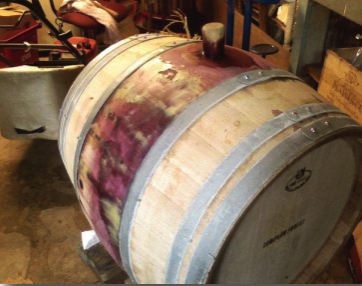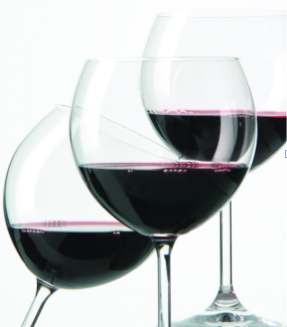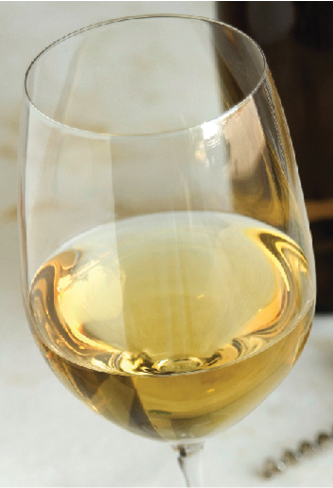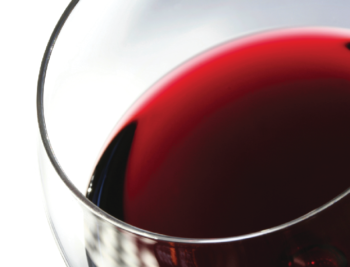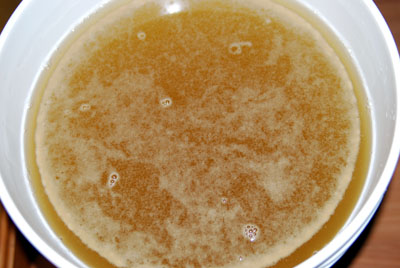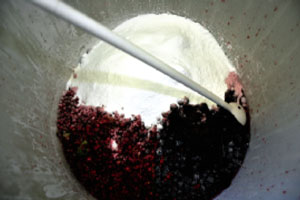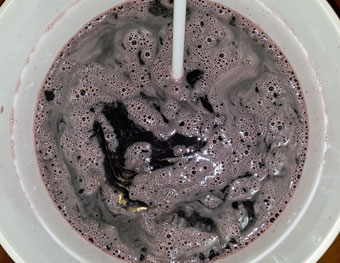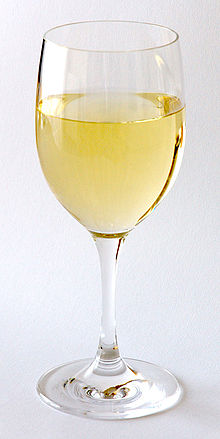Writer: Alison Crowe
Broken Barrels, pH Adjustments, and “Chocolate” Wine
Oak barrels (and barrels made of other woods, sometimes acacia wood or even cherry wood) are really structurally amazing.
Passion Fruit Wine
Well, I will admit I have never made a passion fruit wine (living in Napa, those pesky grapes just seem to be the most convenient sugar source at hand) but I will
Avoiding Sulfites, Adding Copper
Pasteurization operates on a sliding scale and its effectiveness depends on a coefficient between time and temperature.
Lysozyme, Adding Sugar, and Oak Alternatives
Excluding bacteria that can eat malic acid and turn it into lactic acid is the only way to make sure you don’t get refermentation in the bottle.
Late Malolactic, Wine Kit Ingredients, and Color Questions
Your Zinfandel probably had a good reason (in the wine’s opinion, anyway) why it didn’t go through ML fermentation.
Brown Colored White Wine
Sorry to say, but it sounds like you’ve got a no-bueno situation. White grapes should always be pressed as soon as possible after picking in order to reduce juice (and subsequent wine)
Fining Red Wines
Red wines are typically not fined as often as white wines, to which we often add bentonite in order to remove potentially haze-causing proteins. The tannin from the skins of red wines
Overspiced Situation, Fining Reds, Brown Whites
Spices and other added flavorings in home winemaking are one of the trickiest things to get right.
Use Of Bleach In A Winery
My rule is no chlorine bleach in my wineries, never, nohow. Anything containing chlorine might contribute to the dreaded “corked wine aroma,” 2-4-6 trichloroanisole (TCA), in your finished wines. It can be
Questionable ‘Premium’ Grapes
That’s an interesting data set you present there. What I’m about to tell you, please take with many grains of salt because I am not privy to the growing locations of your
Fining Fruit Wines, Sourcing Grapes, and Cleaning Agents
Wine clarifiers, or ‘fining agents’ as they (and a whole host of other wine-finishing additives) are called, are creatures of degrees.
Ripper Test On Red Wine
The short answer to your question: yes, if you dilute your wine sample before running a Ripper analysis for SO2, you then need to multiply your result by the dilution factor you
Wine Pump Options
Wow, can I fly to the Philippines for a little research and equipment-scouting trip? We can sample some of your wine, do a little research into tropical fruit winemaking, go see what
How To Date a Country Wine
Well well, what do you know? That’s a question I’ve never been asked before in all my years of writing this column! The spirit of the vintage laws for commercial wine is
Soapy Taste, Wine Pumps, and Testing Sulfite
I suspect you’ve got a fatty acid issue caused by your stuck/sluggish fermentation. S. cerevisiae can emit fatty acids when under fermentive stress . . .
Perfecting Pyment, Vinifera Vines, and Over-Yeasting
. . . you could also buy some powdered grape tannin, use oak chips, or even use a cup of strong black tea to add some tannin backbone to the wine if it’d be tough for you to obtain grape skins.
Over-Yeasting?
There are a few effects on a wine if you add more yeast. Number one, the fermentation might start a little faster and go to completion faster because there are simply more
Bottle Selection For Sparkling Wine
Ah, the Wiz has visions of broken bottles in your future and it’s a prognostication I wouldn’t like to see become reality. Let’s just say my Fermentation Magic 8 Ball says, “See
Vinifera in Florida?
I would be very cautious (or at least very realistic) about buying Vitis vinifera vines for your Florida vineyard. Most states in the country have their own burgeoning vineyard and winery region
Post-Fermentation Acid Adjustments
I would only adjust with tartaric acid, and not an “acid blend” that contains either malic or citric acids. Both of the latter can be fermented by organisms in the bottle. On
Finding Ideal SO2 Levels
You do an excellent job of outlining one of the major conundrums we all experience in the winemaking world. How much SO2 do we need to add to our wines to keep
What Kind of Water to Use in My Wine Kit
To address your first question: A chemistry teacher in high school once mentioned that since distilled water was free of minerals and many dissolved gasses, it behaved differently in osmotic equilibrium situations
Making Muscat, Battling VA, Finding Ideal SO2 Levels
No matter which strain you use, be sure that you read up on all the specifications from the manufacturer around ideal performance conditions.
Color Problems In My Pinot Noir
I had this exact problem happen to me this year with one of my lots of Russian River Pinot. Thankfully, the original brick-red color disappeared and was replaced by bright red once
Transporting Wine
When moving wine, the main thing to be concerned about is temperature change and since you’ve got carboys, spillage! For the first factor, any kind of moving truck where the back payload
